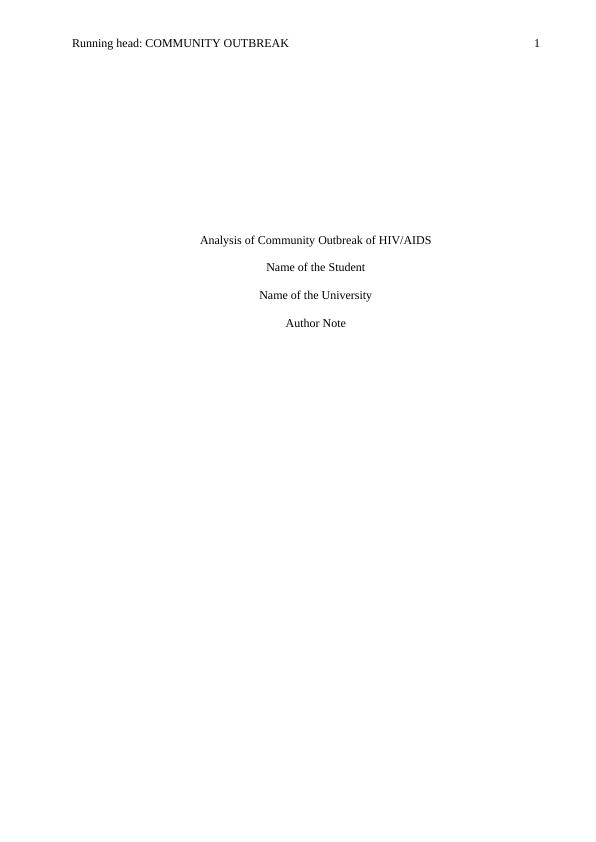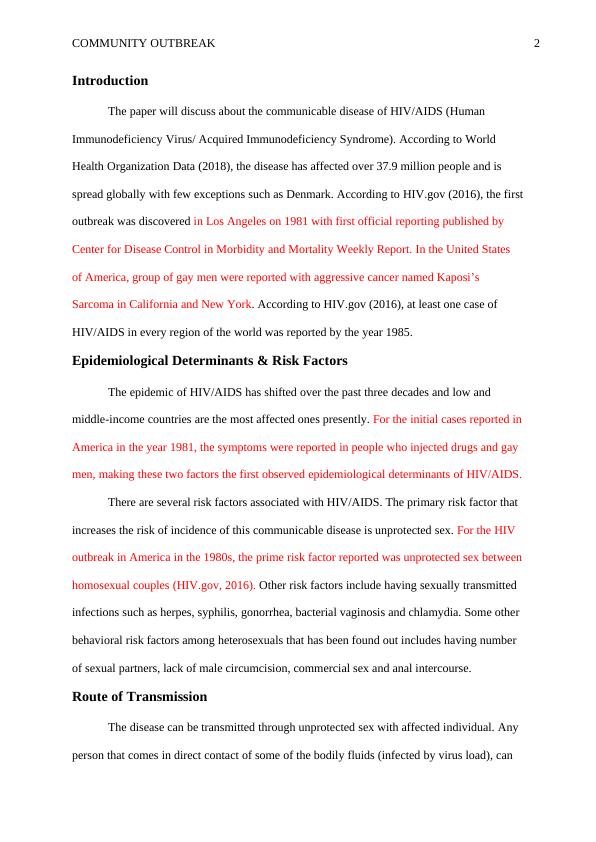Analysis of Community Outbreak of HIV/AIDS
Analyzing the outbreak of HIV/AIDS and its impact on the community
5 Pages802 Words466 Views
Added on 2022-10-01
About This Document
This paper discusses the communicable disease of HIV/AIDS, its epidemiological determinants, risk factors, route of transmission, impact on the community, reporting protocol, and strategies to prevent its spread.
Analysis of Community Outbreak of HIV/AIDS
Analyzing the outbreak of HIV/AIDS and its impact on the community
Added on 2022-10-01
ShareRelated Documents
End of preview
Want to access all the pages? Upload your documents or become a member.
Community Health And Population Assignment
|9
|1988
|12
Communicable Diseases: Global HIV Epidemiology, Role of Agent, Host and Environmental Factors
|18
|5405
|228
Public Health HIV Report 2022
|4
|458
|16
HIV Research with Men who Have Sex with Men (MSM): Advantages and Challenges of Different Methods for Most Appropriately Targeting a Key Population
|10
|2753
|74
About HIV/AIDS | Assignment
|12
|2067
|24
Human Immunodeficiency Virus or HIV | Essay
|5
|1304
|21


